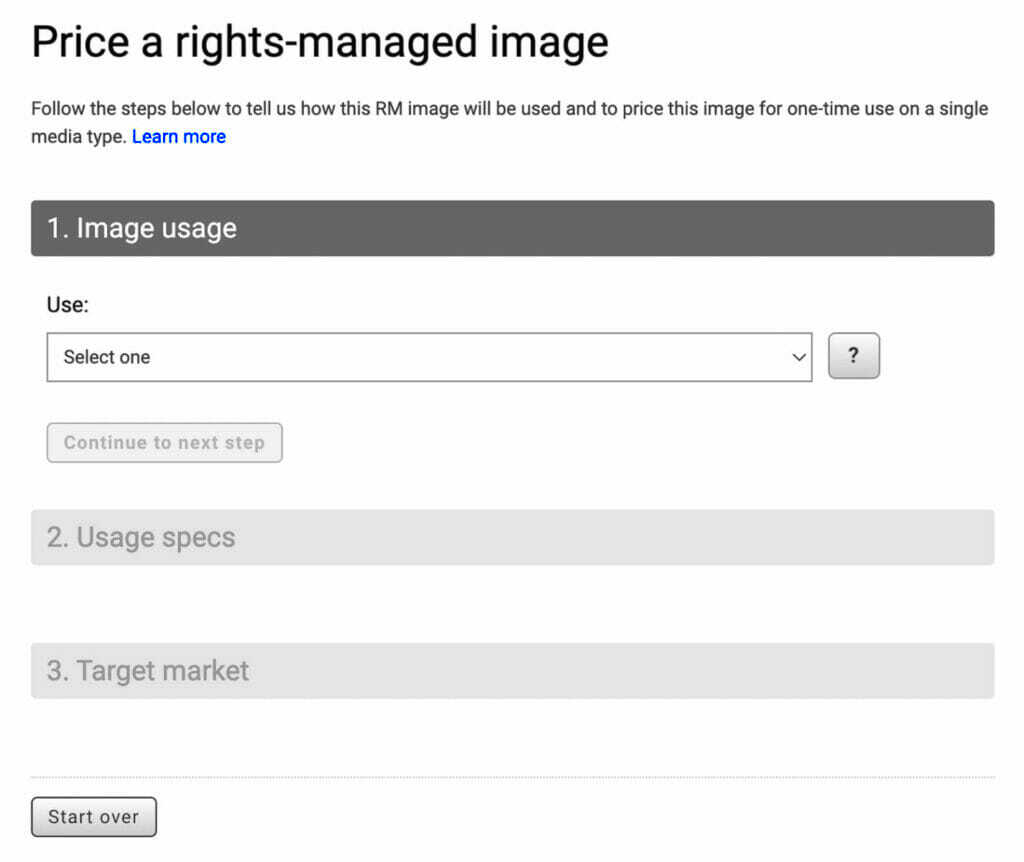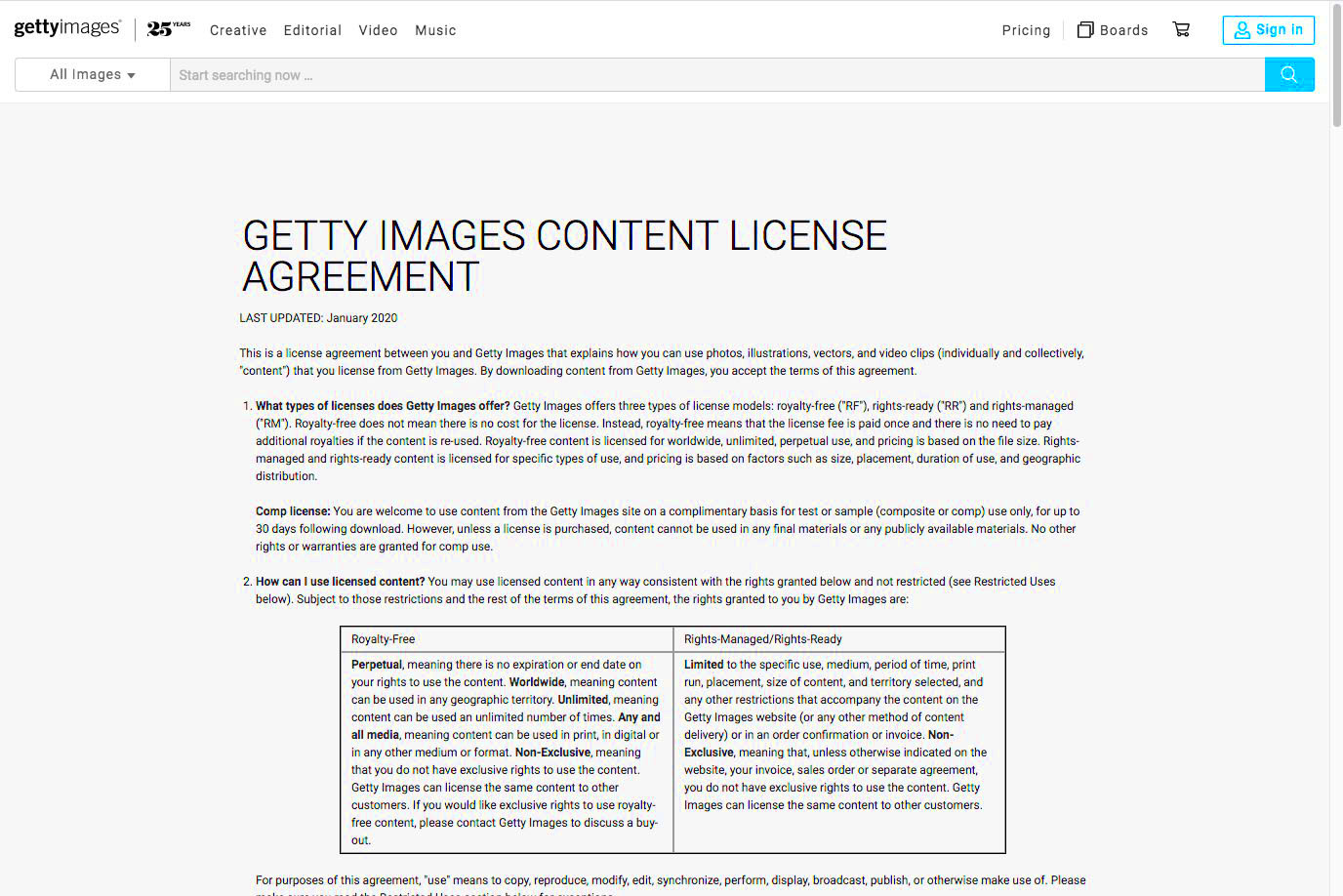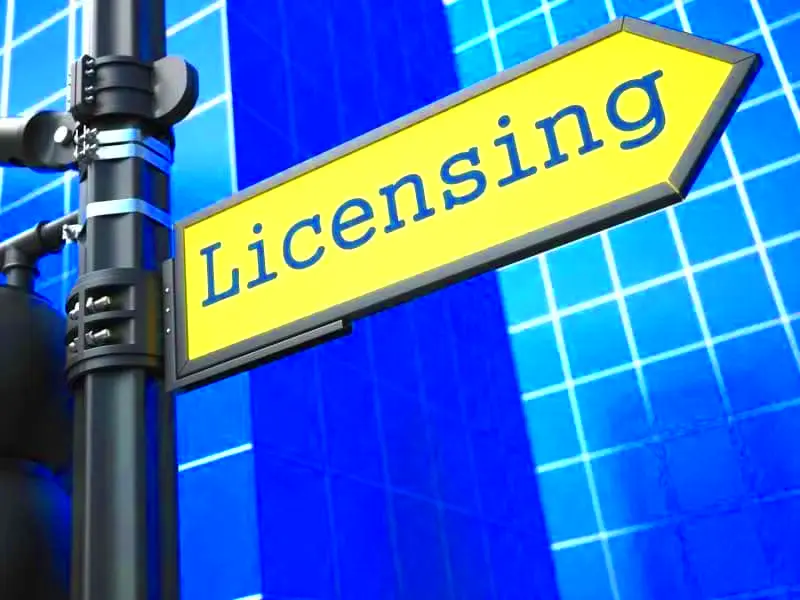Getty Images has been a trusted supplier of high-quality stock images for a long time now. In my capacity as a photographer and visual story teller, I have often utilized their vast library in search for inspiration and resources. However, it’s easy to overlook the necessity of knowing how to get the right license for these pictures.This is not just about choosing a beautiful image but also correctly applying it. Therefore, whether you are writing a blog or doing a presentation or even designing an advertisement, understanding about licensing is important so as to avoid any mistakes from happening.
Understanding the Types of Licenses

As for
Getty Images, it is important to know about the different license types that exist:
- Royalty-Free License: This allows you to use the image multiple times without paying additional fees, but there are restrictions on how you can use it.
- Rights-Managed License: This is tailored for specific uses. You pay based on the type of usage, duration, and region.
- Editorial License: Ideal for journalistic purposes, these images can’t be used for commercial advertising.
Every black and white license has a unique function. Having travelled this terrain for a while, I have learnt that selecting the right type of license is critical to be consistent with the aims of one’s project.
Steps to Acquire a License

These days, it is very easy to get a license for
Getty Images if you know the process. Here are some ways you can handle this:
- Visit the Getty Images Website: Start by browsing their extensive library. Use keywords that resonate with your project.
- Select Your Image: Once you find the perfect image, click on it to see the licensing options available.
- Choose the License Type: Decide whether you need a royalty-free, rights-managed, or editorial license. Make sure it fits your intended use.
- Add to Cart: After selecting your license, add the image to your cart. Here’s where the fun begins—seeing how your vision can come to life!
- Checkout: Review your selections, fill in the payment details, and complete the transaction. Keep the confirmation for your records.
As someone who has been through this process myself, I can assure you that it is quite a fulfilling one. Getting yourself a license makes you feel as if you are almost there with your creative ideas.
How to Use Getty Images Properly
Using
Getty Images is tantamount to accessing a treasure trove of visual narratives but it also means one must use them appropriately. For me, I have realized that compliance with licensing contracts is equally important as choosing the appropriate photo. Taking into consideration the following aspects will help you get it right:
- Adhere to Licensing Terms: Always read the fine print. Every image comes with its own set of rules regarding how and where it can be used.
- Avoid Altering Images: Unless permitted, refrain from making changes to the images. This ensures you’re honoring the creator’s vision.
- Credit Where It’s Due: While it might not always be necessary, crediting the photographer can add depth to your content and show appreciation.
In my recollection, there was a time where an image was utilized without fully comprehending the restrictions attached to it. This happened to be an expensive error on my part, but in so doing educated me on the significance of appropriate usage. Take these pictures as though they were fine pieces of art— show them caution and regard.
Common Misconceptions About Licensing
Myths can confuse when it comes to licensing and that is a tricky landscape to navigate. These are a few of the misconceptions I have encountered:
- Royalty-Free Means Free: Many people think royalty-free means free of cost. In reality, you pay a one-time fee to use the image without ongoing royalties.
- All Images are Editable: Not all licenses allow for modifications. Always check the license type before making any changes.
- Using Images in Social Media is Always Okay: Just because you see an image online doesn’t mean you can use it. Licensing still applies.
Conversations with other artists have taught me that most of these errors are the result of ignorance. Therefore, by spending time understanding license terms, we can avoid mistakes and improve our projects.
Tips for Selecting the Right Images
It is a challenging task to select the most suitable image. For instance, I mostly pass my time scanning galleries trying to identify good images that twinkle my eyes and here some hints on how I have progressed in selecting such images:
- Define Your Message: Before diving into image selection, clarify what you want to convey. An image should enhance your message, not distract from it.
- Consider Your Audience: Think about who will view your content. Select images that resonate with their interests and emotions.
- Check for Consistency: Ensure that the style and tone of the images align with your brand or project. Consistency creates a cohesive visual narrative.
- Test Different Options: Don’t hesitate to experiment. Sometimes, the unexpected image can speak volumes and captivate your audience in ways you didn’t foresee.
Selecting images for a community event was one of my most admired projects because we were able to connect with people emotionally by making the visual content in harmony with the essence of what was happening. The words fail at times but the perfect picture can change your output completely and provide emotions you never knew existed.
Frequently Asked Questions
Many questions can arise when trying to make sense of
Getty Images licensing. I came across some frequently asked questions, along with my thoughts on them.
Can I use Getty Images for free?
- Generally, no. While some images may be available for free under specific conditions, most require a paid license. Always verify the licensing terms.
What happens if I use an image without a license?
- Using an image without the proper license can lead to legal repercussions, including fines. It’s not worth the risk. I once learned this the hard way—an image I thought was free turned out to cost me dearly.
How do I find the right license for my needs?
- Getty Images provides clear options on their website. Take the time to read through the descriptions and choose the one that fits your project’s requirements.
Can I modify the images?
- This depends on the license. For rights-managed images, alterations might not be allowed. Always check the specific license terms before making changes.
What is the difference between editorial and commercial use?
- Editorial use is typically for news and informational purposes, while commercial use is for advertising and promotional material. Knowing this distinction is key to using images correctly.
Would like to respond these frequently asked questions so as to clear certain uncertainties related to image rights. It is true that for using visual content appropriately, knowledge is power.
Conclusion
Interpreting licensing with Getty Images has more than enhancing your creative journey more than just obeying the laws. Right pictures plus good use can convey interesting stories that will excite your audience. Embrace the learning journey and allow these images to breathe life into your dreams!
 As for Getty Images, it is important to know about the different license types that exist:
As for Getty Images, it is important to know about the different license types that exist: These days, it is very easy to get a license for Getty Images if you know the process. Here are some ways you can handle this:
These days, it is very easy to get a license for Getty Images if you know the process. Here are some ways you can handle this:
 admin
admin








